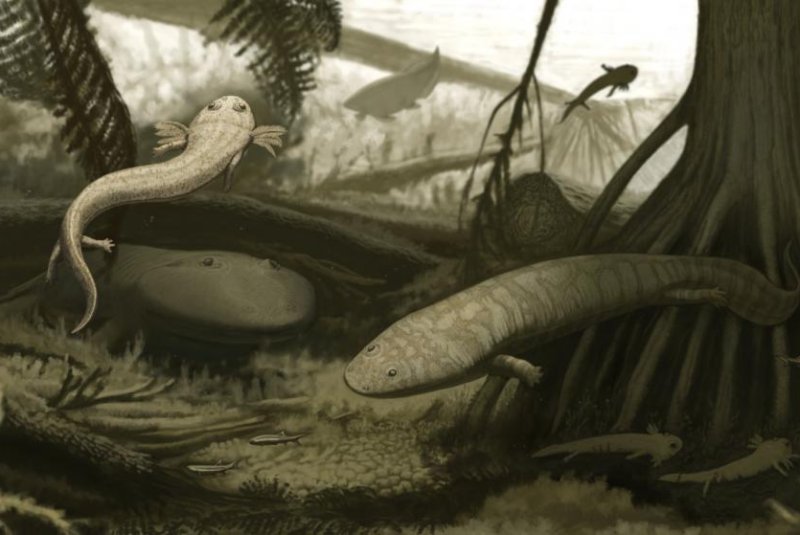An artistic renderings reveals what the amphibians of Pangea's southern tropics might have looked like. Photo by Field Museum/Andrey Atuchin
TERESINA, Brazil, Nov. 5 (UPI) -- If you thought eels couldn't get any scarier, you were mistaken. Some 278 million years ago, when all of Earth's continents were a single island, tropical freshwater habitats hosted a fanged eel-like amphibian.
Scientists have had a rather incomplete picture of biodiversity among Pangea's southern tropics. But a new trove of Brazilian fossils is helping to change that.
"Almost all of our knowledge about land animals from this time, comes from a handful of regions in North America and western Europe, which were located near the equator," Ken Angielczyk, a scientist with Chicago's Field Museum, said in a press release. "Now we finally have information about what kinds of animals were present in areas farther to the south, and their similarities and differences to the animals living near the equator."
A new paper, published in the journal Nature Communications, describes two new strange species of Permian period -- the aforementioned fanged eel, Timonya annae, and the so-called fire frog, Procuhy nazarienis, resembling a cross between a frog and salamander. Both species were fully aquatic amphibians.
The new research, carried out by an international team of scientists, also uncovered South America's oldest terrestrial reptile fossil, a lizard-like species named Captorhinus aguti. The reptile had previously only been unearthed in North America.
"Now that we know that their distant relatives inhabited a vast lake system in the tropical region of the supercontinent Pangaea," Martha Richter, of the Natural History Museum in London, told the BBC, "we can find out more about their abundance, palaeobiology, and how wide their distribution away from the equator was."
Also among the newly analyzed bones was the skull and body of a large-headed, dog-sized amphibian whose later ancestors have been discovered throughout South Africa.
"Exploration in understudied areas, such as northeastern Brazil, gives us a snapshot of life elsewhere that we can use for comparisons," added Angielczyk. "In turn, we can see which animals were dispersing into new areas, particularly as an ice age was ending in the southern continents and environmental conditions were becoming more favorable for reptiles and amphibians."















